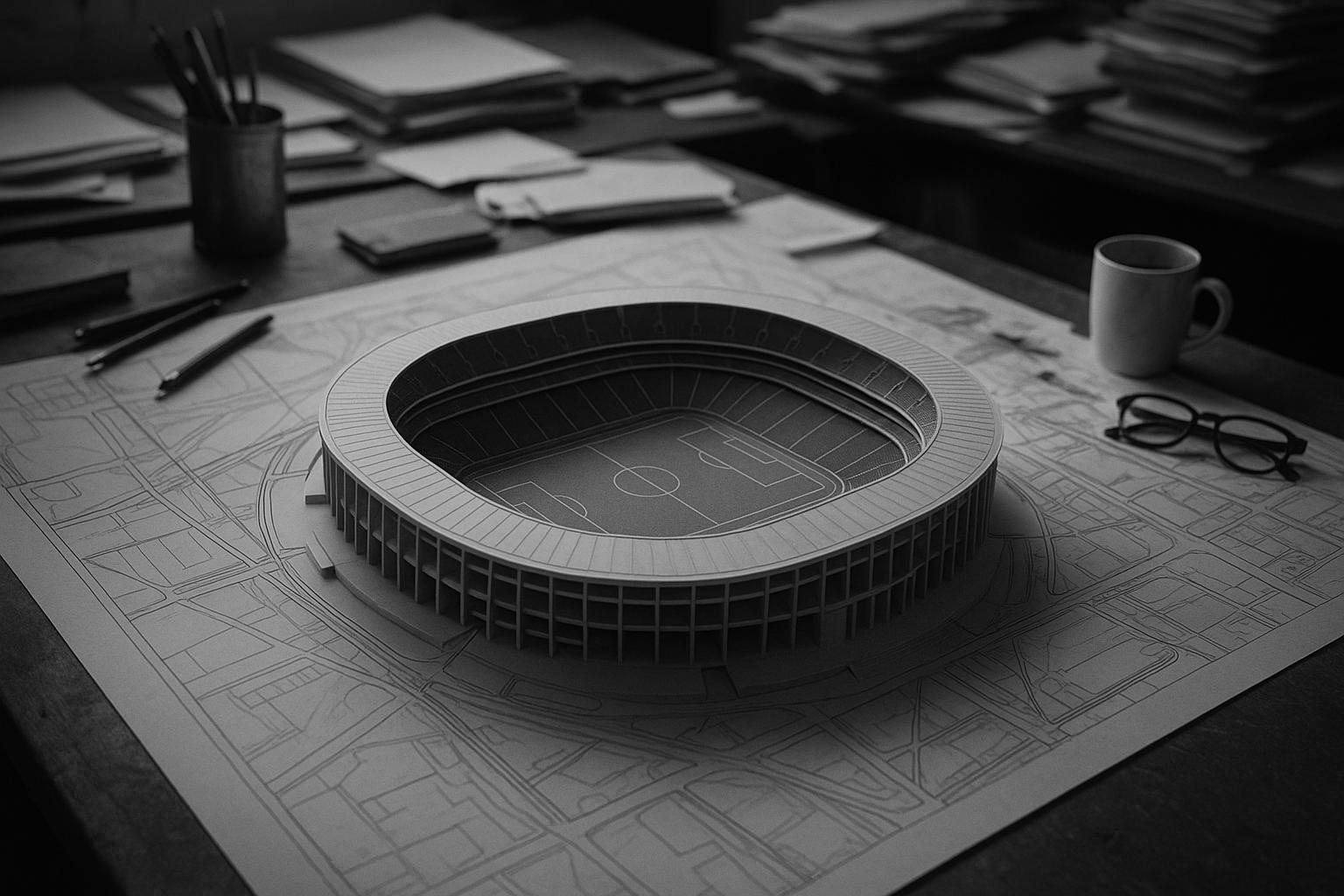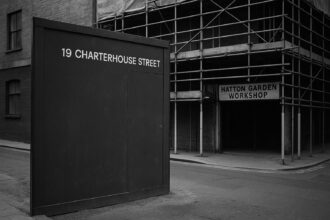Chelsea Football Club is in preliminary discussions with London Mayor Sadiq Khan about possibly building a new stadium at Earl’s Court, marking a significant step in the club’s long-standing debate over expanding or replacing Stamford Bridge. Despite these talks, major hurdles remain, including local planning complexities and conflicting redevelopment plans for Earl’s Court.
Chelsea Football Club has reportedly engaged in discussions with London Mayor Sadiq Khan about the possibility of constructing a new stadium at Earl’s Court, a site in west London. This follows longstanding conversations around the club’s need to modernise or expand its home ground, Stamford Bridge, which currently accommodates around 41,000 spectators. This capacity ranks Stamford Bridge as the ninth-largest stadium in the Premier League but leaves Chelsea significantly behind clubs such as Manchester United, whose Old Trafford stadium holds over 74,000 fans, making it the largest club football stadium in the UK.
The question of whether Stamford Bridge should undergo redevelopment or be replaced has divided Chelsea’s ownership group. Supporters of a move to Earl’s Court have pointed to the potential for a larger, more modern stadium that could elevate the club’s status and revenue streams. Minority shareholder Hansjorg Wyss described Earl’s Court as “the best option we can even think of,” though acknowledged several hurdles remain, including the lack of a clear project leader. Meanwhile, co-owner Todd Boehly conceded that any stadium development might only come to fruition by 2042, indicating the complexity and long-term nature of the endeavour.
Earl’s Court itself has been earmarked for a major redevelopment spanning 40 acres of largely unused land since the demolition of the Earls Court Exhibition Centre in 2015. The Earl’s Court Development Company (ECDC), backed by notable investors and Transport for London’s property arm, has proposed a substantial mixed-use project featuring residential towers, parks, cultural venues, shops, and restaurants. This £10 billion development aims to deliver 4,000 new homes, with a significant portion allocated as affordable housing. The project is currently under consultation, with final planning decisions expected by mid-2025 and construction set to begin in late 2026.
Despite these plans, ECDC has publicly denied any formal discussions with Chelsea about relocating their stadium to Earl’s Court. They assert their masterplan focuses on residential and commercial spaces without provision for a football stadium, highlighting the potential disconnect between Chelsea’s aspirations and the current redevelopment agenda for the area. Local authorities, including Hammersmith & Fulham Council and the Royal Borough of Kensington and Chelsea, hold significant sway over approvals, adding layers of complexity.
Stamford Bridge, home to Chelsea since 1905, has a storied history but has not expanded significantly in recent decades. With a capacity around 40,000, it is smaller than many Premier League stadiums and notably less than Old Trafford, which has undergone expansions in recent history aiming for a capacity near 80,000. While Old Trafford’s size makes it one of Europe’s largest football venues, Chelsea’s comparatively modest stadium limits its matchday revenue and fan experience potential.
The dialogue between Chelsea’s owners and the Mayor’s office reflects the challenging balance between urban development, historical legacy, and sporting ambitions. Mayor Sadiq Khan’s office has stated it is unaware of any recent formal proposals from Chelsea regarding Earl’s Court and emphasises decisions will depend on detailed plans. The Mayor’s role is pivotal, as any redevelopment or relocation requires his approval, alongside broader city planning and transport considerations inherent in London’s complex urban environment.
Chelsea has declined to comment officially on their stadium plans or to confirm meetings with the Mayor’s office, leaving much of the discussion speculative. Owner Todd Boehly’s remarks about a long-term horizon and the need to align the club’s strategic vision underscore the difficulties in moving forward. Discussions regarding a new or redeveloped stadium are emblematic of the wider power dynamics within Chelsea’s ownership group, where differing views continue to shape the club’s future trajectory.
Ultimately, Chelsea’s stadium ambitions highlight broader issues faced by many historic football clubs seeking to modernise their infrastructure within urban settings. The tension between preserving tradition and embracing development, as well as navigating complex local politics and investment requirements, is playing out in London much as it has in other footballing centres around the world.
 Reference Map:
Reference Map:
- Paragraph 1 – [1], [4]), [6]
- Paragraph 2 – [1], [4])
- Paragraph 3 – [2], [7]
- Paragraph 4 – [7], [2]
- Paragraph 5 – [4]), [3], [6]
- Paragraph 6 – [1], [2]
- Paragraph 7 – [1]
Source: Noah Wire Services
- https://www.dailymail.co.uk/sport/football/article-14860227/Chelsea-hold-talks-Mayor-London-new-stadium-plans-amid-ownership-power-struggle.html?ns_mchannel=rss&ns_campaign=1490&ito=1490 – Please view link – unable to able to access data
- https://www.ft.com/content/3929b701-7740-419e-82e9-0ace70c88ccb – The Earl’s Court Development Company (ECDC) has submitted plans for two new skyscrapers in central London, marking the first phase of development on a 40-acre site by 2030. The site, largely unused since the Earls Court Exhibition Centre was demolished in 2015, will feature 42 and 27-storey towers. The £10bn project aims to address housing shortages with 4,000 new homes, 35% of which will be affordable. ECDC, backed by Delancey, Dutch pension fund APG, and TfL’s property arm, intends to start construction in late 2026 following a consultation process and planning decisions expected by mid-2025. The proposal, influenced by four years of local consultations, includes parks, cultural venues, shops, and restaurants. Local conservation groups and residents express mixed reactions over concerns about height, density, and parking. The application’s approval involves Hammersmith & Fulham Council and the Royal Borough of Kensington and Chelsea.
- https://en.wikipedia.org/wiki/Old_Trafford – Old Trafford is a football stadium in Old Trafford, Greater Manchester, England, and is the home of Manchester United. With a capacity of 74,197, it is the largest club football stadium (and second-largest football stadium overall after Wembley Stadium) in the United Kingdom, and the twelfth-largest in Europe. It is about 0.5mi from Old Trafford Cricket Ground and the adjacent tram stop. Nicknamed ‘The Theatre of Dreams’ by Bobby Charlton, Old Trafford has been United’s home ground since 1910, although from 1941 to 1949 the club shared Maine Road with local rivals Manchester City as a result of Second World War bomb damage. Old Trafford underwent several expansions in the 1990s and 2000s, including the addition of extra tiers to the North, West and East Stands, almost returning the stadium to its original capacity of 80,000. Should further expansion occur, it is likely to involve the addition of a second tier to the South Stand, which would raise the capacity to around 88,000, although alternative suggestions have been made for a new stadium in recent years. The stadium’s record attendance was recorded in 1939, when 76,962 spectators watched the FA Cup semi-final between Wolverhampton Wanderers and Grimsby Town.
- https://en.wikipedia.org/wiki/Stamford_Bridge_(stadium) – Stamford Bridge is a football stadium in Fulham, in the Borough of Hammersmith and Fulham, in South West London. It is the home of Premier League club Chelsea. With a capacity of 40,173, it is the twelveth largest football stadium in England. Opened in 1877, the stadium was used by London Athletic Club until 1905, when new owner Gus Mears founded Chelsea Football Club to occupy the ground; Chelsea have played their home games there ever since. It has undergone major changes over the years, most recently in the 1990s when it was renovated into a modern, all-seater stadium. Stamford Bridge has hosted Charity Shield games. It has also hosted numerous other sports, such as cricket, rugby union, rugby league, speedway, greyhound racing, baseball and American football. The stadium’s highest official attendance is 82,905, for a league match between Chelsea and Arsenal on 12 October 1935.
- https://en.wikipedia.org/wiki/List_of_football_stadiums_in_England – This article provides a comprehensive list of football stadiums in England, detailing their locations, capacities, and the clubs that occupy them. It includes information on current stadiums, future developments, and notable historical facts. The list serves as a valuable resource for understanding the landscape of football venues across the country, highlighting the diversity and history of stadiums that have hosted numerous memorable matches and events.
- https://sportsballstu.com/english-premier-league-stadium-capacities/ – This article provides a comprehensive list of stadium capacities for English Premier League clubs, detailing the name of each ground and its seating capacity. It serves as a valuable resource for understanding the size and scale of football venues across the league, highlighting the differences in stadium sizes and the potential for future expansions or developments.
- https://www.thestadiumbusiness.com/2023/03/31/ecdc-denies-talks-over-earls-court-move-for-chelsea/ – The Earl’s Court Development Company (ECDC) has categorically denied any discussions with Chelsea FC regarding a potential stadium relocation to the Earl’s Court site. ECDC stated that their masterplan for the area does not include a football stadium, focusing instead on delivering 4,500 homes, 15,000 jobs, and cultural facilities in a zero-carbon development. This denial comes amid previous speculations about Chelsea’s interest in moving to Earl’s Court, highlighting the complexities and challenges associated with such a relocation.
Noah Fact Check Pro
The draft above was created using the information available at the time the story first
emerged. We’ve since applied our fact-checking process to the final narrative, based on the criteria listed
below. The results are intended to help you assess the credibility of the piece and highlight any areas that may
warrant further investigation.
Freshness check
Score:
3
Notes:
 The narrative appears to be a republished version of earlier reports from March 2023, with no new substantial information. ([standard.co.uk](https://www.standard.co.uk/sport/football/chelsea-fc-earls-court-stamford-bridge-new-stadium-b1071162.html?utm_source=openai))
The narrative appears to be a republished version of earlier reports from March 2023, with no new substantial information. ([standard.co.uk](https://www.standard.co.uk/sport/football/chelsea-fc-earls-court-stamford-bridge-new-stadium-b1071162.html?utm_source=openai))
Quotes check
Score:
2
Notes:
 Identical quotes from March 2023 are reused without any updates or new sources. ([standard.co.uk](https://www.standard.co.uk/sport/football/chelsea-fc-earls-court-stamford-bridge-new-stadium-b1071162.html?utm_source=openai))
Identical quotes from March 2023 are reused without any updates or new sources. ([standard.co.uk](https://www.standard.co.uk/sport/football/chelsea-fc-earls-court-stamford-bridge-new-stadium-b1071162.html?utm_source=openai))
Source reliability
Score:
4
Notes:
The narrative originates from a single outlet, the Daily Mail, which has a history of sensationalism and may not always be reliable.
Plausability check
Score:
3
Notes:
The report lacks new details and relies on previously reported information, raising questions about its originality and potential for disinformation.
Overall assessment
Verdict (FAIL, OPEN, PASS): FAIL
Confidence (LOW, MEDIUM, HIGH): HIGH
Summary:
 The narrative is a recycled version of earlier reports from March 2023, with no new substantial information or updates. ([standard.co.uk](https://www.standard.co.uk/sport/football/chelsea-fc-earls-court-stamford-bridge-new-stadium-b1071162.html?utm_source=openai)) The reliance on a single, potentially unreliable source and the lack of new details raise concerns about its credibility and potential for disinformation.
The narrative is a recycled version of earlier reports from March 2023, with no new substantial information or updates. ([standard.co.uk](https://www.standard.co.uk/sport/football/chelsea-fc-earls-court-stamford-bridge-new-stadium-b1071162.html?utm_source=openai)) The reliance on a single, potentially unreliable source and the lack of new details raise concerns about its credibility and potential for disinformation.













